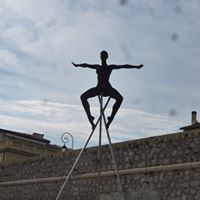During the time of the Reformation, worship services were held in "semi-clandestine churches." What were these types of churches called?
A Schuilkerken is a house of worship used by religious minorities during the Reformation. The communal worship is tolerated by those of the majority faith on condition that it is discreet and not conducted in public spaces. Benjamin J. Kaplan, historian, defined these as a "semi-clandestine churches." Schuilkerken are commonly built inside houses or buildings and do not show a public façade to the street. They were an important advance in religious tolerance in the wake of the Reformation, an era when worship services conducted by minority faiths were often banned and sometimes penalized.
The 1648 Treaty of Osnabruck, part of the Peace of Westphalia, specified three types of worship: "domestic devotion", public religious services, and private religious services. It is within this last category that "semi-clandestine" churches fall. These churches were characterized by group religious services carried out by clergy "in their own houses or in other houses designated for the purpose, not in churches at set hours." Kaplan writes that the pretense of clandestinity "enabled Europeans to accommodate dissent without confronting it directly, to tolerate knowingly what they could not bring themselves to accept fully."
Built in 1630, in the oldest part of Amsterdam, in a particularly steep-gabled building holding a secret. Make your way narrow, steep staircase to find a magnificently miniature, fully-appointed Catholic church.
More Info:
en.wikipedia.org








